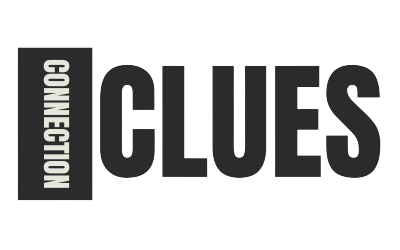Opening a salon is more than just styling hair—it’s building a business. Whether you’re a seasoned stylist or a beauty industry newcomer, having a detailed hair salon business plan is essential for turning your vision into a profitable reality.
Your business plan will guide your operations, attract investors or lenders, and help you make smart decisions from day one.
In this guide, we’ll cover:
- What to include in a salon business plan
- How to write each section
- Tips for profitability and growth
- Free templates and tools to get started
What Is a Hair Salon Business Plan?
A hair salon business plan is a strategic document that outlines your salon’s goals, target market, services, pricing, operations, financial projections, and marketing strategies. It serves as both a roadmap for success and a tool to attract funding or partnerships.
Whether you plan to run a solo chair rental model or a full-service salon with multiple stylists, a business plan helps clarify your direction and stay competitive.
What to Include in a Hair Salon Business Plan
Here’s a breakdown of the key components of a professional salon business plan:
Executive Summary
This is the first section, but it’s usually written last. It provides a quick overview of your salon.
Include:
- Salon name and location
- Mission statement
- Brief description of services
- Ownership and legal structure
- Startup cost estimate and funding goals
- Future vision
Tip: Keep it concise—1 page is ideal.
Company Description
Describe what makes your salon unique.
Cover:
- Type of salon (e.g., boutique, eco-friendly, luxury, men’s grooming)
- Business model (commission-based, booth rental, hybrid)
- Competitive advantage (niche services, location, experience)
- Legal entity (LLC, sole proprietor, partnership)
Market Analysis
Research and analyze your local beauty industry.
Include:
- Target market (age, gender, income, lifestyle)
- Local competition (what are their strengths/weaknesses?)
- Industry trends (e.g., clean beauty, mobile services, personalization)
- Market size and opportunity
Use tools like IBISWorld, Statista, or local chamber data to back up your findings.
Salon Services and Pricing
Clearly define what your salon will offer and how you’ll price it.
Example Services:
- Haircuts and styling
- Coloring and highlights
- Blowouts and treatments
- Bridal or event styling
- Scalp and hair health consultations
- Add-on services (lashes, waxing, etc.)
Pricing Strategy:
- Competitive analysis
- Value-based pricing
- Upsell opportunities (bundles, memberships, retail)
Be sure to mention any premium products or brand partnerships.
Marketing and Sales Strategy
Explain how you’ll attract and retain customers.
Key areas:
- Branding and positioning
- Website and SEO strategy
- Social media platforms (Instagram, TikTok, Facebook)
- Loyalty programs and referrals
- Local partnerships (gyms, fashion boutiques, wedding vendors)
- Booking platform (Fresha, Vagaro, GlossGenius)
SEO tip: Use keywords like “best hair salon in [city]” or “hair color specialists near me” on your website.
Operations Plan
Show how your salon will run day to day.
Include:
- Days/hours of operation
- Staff roles (stylists, assistants, front desk, manager)
- Equipment and product suppliers
- Booking and POS systems
- Inventory and sanitation processes
Note whether you’ll rent chairs, offer employee benefits, or lease a salon suite.
Management and Team
Outline who’s running the business.
Add:
- Owner background and experience
- Key staff bios (if known)
- Advisory team or mentors
- HR policies, training plans, and compensation structure
Financial Plan and Projections
This is one of the most critical sections—especially for lenders or investors.
Include:
- Startup costs (equipment, lease, licenses, marketing)
- 3- to 5-year revenue projections
- Monthly operating expenses
- Break-even analysis
- Profit/loss forecast
- Cash flow projections
Typical Startup Costs:
| Item | Estimated Cost |
| Lease deposit | $3,000–$10,000 |
| Equipment & furniture | $10,000–$25,000 |
| Products & inventory | $2,000–$5,000 |
| Website and branding | $1,000–$5,000 |
| Licenses and permits | $500–$1,500 |
| Working capital | $5,000–$20,000 |
Funding Request (if applicable)
If you’re seeking funding, state:
- How much you need
- What you’ll use the funds for
- Desired terms (loan, equity, partnership)
Clearly show how the investment will lead to growth and profitability.
Appendix
Use this space for supporting documents such as:
- Floor plan or salon layout
- Owner resume
- Market research data
- Example marketing materials
- Licenses or permits
- Product or equipment quotes
Tips for a Profitable Hair Salon Business
- Offer tiered pricing based on stylist experience
- Sell retail products (shampoos, styling tools, etc.)
- Encourage rebooking and client retention
- Introduce service bundles or memberships
- Track KPIs like average ticket size, rebooking rate, and retail per client
- Automate marketing and appointment reminders
Conclusion
Launching a successful salon doesn’t happen by accident—it takes vision, planning, and execution. A strategic hair salon business plan gives you clarity, confidence, and the foundation to build a thriving beauty brand.
Whether you’re pitching to investors or planning your next 12 months, your business plan is your blueprint for success.
FAQs
1. Do I need a business plan to open a hair salon?
Yes, a business plan helps secure funding, guide operations, and reduce risk.
2. How much does it cost to start a hair salon?
Startup costs typically range from $15,000 to $75,000, depending on location and size.
3. What’s the best location for a hair salon?
High-traffic areas near shopping centers, gyms, or upscale neighborhoods are ideal.
4. How can I market my hair salon?
Use social media, Google My Business, referrals, and influencer partnerships to build awareness.
5. Can I open a salon without being a licensed stylist?
Yes, but you’ll need to hire licensed professionals and comply with local regulations.
Also read: Starting a Business in Washington: Step-by-Step Guide for 2025









